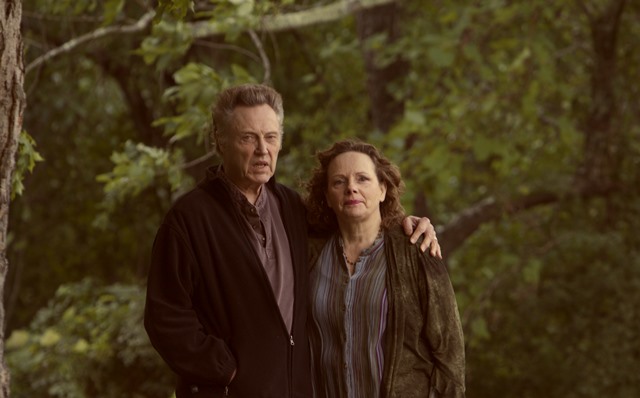
If you thought artist Chris Burden’s legendary 1971 performance piece Shoot couldn’t be outdone, well, Christopher Walken begs to differ. He plays Caleb Fang, a deranged performance artist who tries to one-up the late California artist, in the new feature film The Family Fang, which recently screened at the Tribeca Film Festival. Nicole Kidman co-stars in the film, directed by and starring Jason Bateman, of “Arrested Development” fame.
When Caleb Fang and his then-girlfriend Camille (Maryann Plunkett) are in art school, one of their instructors (Harris Yulin) scoffs at Burden’s piece. What power could there possibly be in a stunt like this, he says, if it takes place in the confines of an art gallery?
Embarrassed at having shown enthusiasm for Burden’s piece in class, Caleb determines a way to win back his professor’s favor. Armed with a crossbow, he climbs to a high floor in an empty classroom building and, as his professor crosses the quad unawares, he shoots him in the shoulder.
“He knew it was coming,” jokes Walken, laughing, in a mock-documentary within the movie. “He just didn’t know when.” In fact, the professor is so taken with the performance that he doesn’t even turn Caleb in to the authorities.
Nicole Kidman and Jason Bateman in The Family Fang.
Photo: courtesy Starz Digital.
Kidman and Bateman play Caleb and Camille’s kids, Annie and Baxter, whom their parents simply refer to as A and B. Yulin warns Caleb and Camille that having kids will kill their creativity, so when they have kids anyway, they force them to perform in twisted guerrilla performance-art pieces, sometimes without even letting the kids in on them ahead of time. Annie and Baxter are still living out the psychic consequences of being subjugated to their parents’ art, including rocky careers and relationships.
The movie has some fine comic moments. For me, chief among them is a debate between two art critics, one from Artforum (played by Steve Witting), the other from the Village Voice (Scott Shepherd), who, respectively, revere and dismiss the Fangs’ performance work. Shepherd gleefully torments his counterpart, mocking both him and the artists.
The film’s major plot turn comes when Caleb and Camille disappear, leaving behind what seems like a bloody crime scene—or is it their most outlandish performance yet?
Perhaps it’s inevitable that a big-budget feature film would simplify the novel’s more delicate treatment of the dysfunctional-family genre, and this one gets mawkish at times, complete with sentimental music. There are also minor notes that ring false to art-world insiders, like when Camille Fang says the duo does gallery shows only when they need to get grants. (It doesn’t work that way, guys.)
But these are quibbles compared to the good news, which is that Hollywood has created a feature film about performance artists—and it’s actually pretty good.